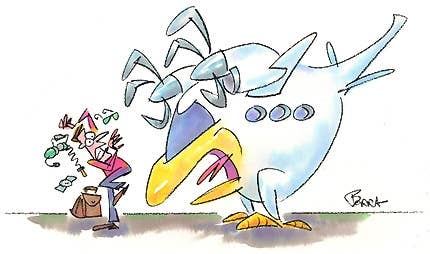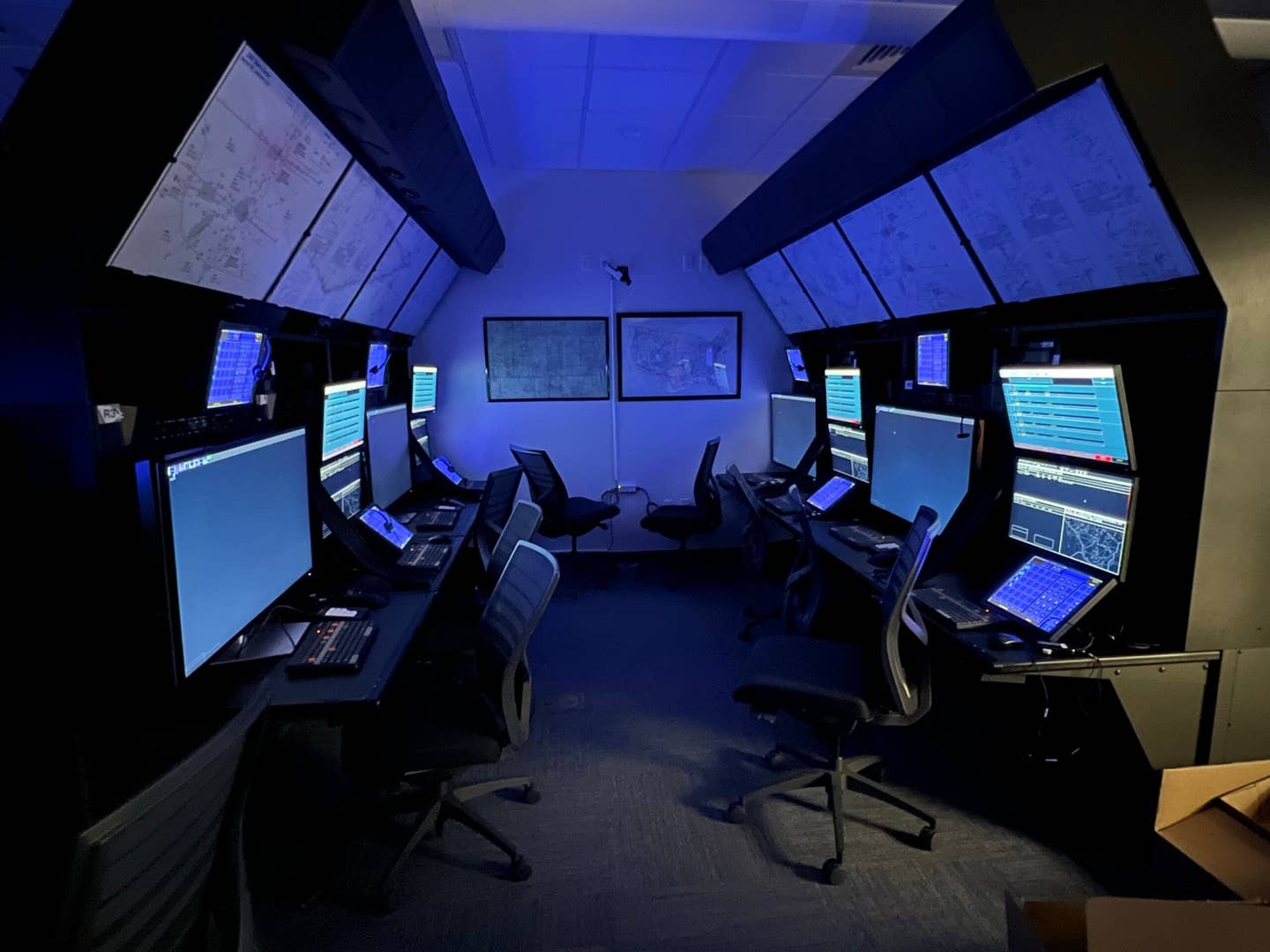
In the history of aviation there have been a number of aircraft that were considered dangerous, including the Learjet 20 series, the Aerostar and the Twin Comanche. More recently the airplane some people seem to love to hate is the Mitsubishi MU-2. There are numerous websites that detail what the authors consider to be the dangerous attributes of this airplane, making statements like, "How many more people need to die ... in order for Mitsubishi to recall this aircraft?" Representative Tom Tancredo from Colorado even introduced legislation to ground the MU-2.
On the other hand, there are many people who love the MU-2. One corporation has operated a series of MU-2s in the New England area for three decades. You have to wonder if the MU-2 is so dangerous, how could someone operate the airplane under such difficult conditions for that many years without an incident or accident? How could another MU-2 successfully accumulate over 22,500 flight hours, and 141 MU-2s fly 10,000 to 20,000 hours without becoming an accident statistic?
A quick look at the accident data on MU-2s shows that this airplane does have a higher than average accident rate. Bob Breiling (breilinginc.com) has been compiling and analyzing business turbine aircraft accidents since bizjets were introduced in the 1960s. According to the data he sent me, 27.7 percent of all MU-2s delivered have been involved in an accident. This accident rate is exceeded only by the Merlin series at 30.2 percent, but the MU-2 has a higher fatal accident rate.
In order to try to understand why the MU-2 might have such a high accident rate, I contacted Scott Sobel, who handles the public relations for Mitsubishi Heavy Industries (MHIA) in the United States. He referred me to Pat Cannon, chief pilot of Turbine Aircraft Services, which serves as MHIA's representative in the United States. It turns out that Pat is one of the most knowledgeable pilots on the MU-2, as he has operated MU-2s for many years and was the pilot for the special certification testing conducted by the FAA. Scott and Pat offered to give me an opportunity to experience the MU-2's flight characteristics myself and form my own opinion.
I have to admit I approached the airplane with a mixture of anticipation and trepidation. On the one hand, it is always exciting to fly a high-performance airplane you have never flown before. On the other hand, based on the many warnings I had read about the MU-2, I had to wonder if I would be able to handle an airplane with such high wing loading. Could I adjust to the differences caused by the use of spoilers rather than ailerons? Would we somehow trespass into the so-called "hidden corner" in the flight envelope that some people say makes it impossible to control the airplane after an engine failure?
I was surprised to find that the MU-2 was one of the most solid, easy to fly airplanes I have ever had the pleasure to fly. Right out of the chocks I felt completely comfortable. Steep turns, slow flight, stall recovery from the shaker, single-engine approaches-we did it all. My first landing was acceptable. The last one was about the best landing I have ever done-one of those landings when you are not sure if you have actually touched down yet. So much for the "every landing in an MU-2 is a controlled crash" theory!
Of course I did experience one problem that Pat had warned me about. With no ailerons, there is no adverse yaw, so there is no need to add rudder as you initiate a turn. I could not believe how hard it was to break myself of that habit. I finally decided to pretend that a yaw damper was engaged, but I still found the appropriate foot pushing on the rudder despite my best intentions.
What I did not experience was any significant difference in how the MU-2 flew compared with the high-performance airplanes I am experienced in. That was the first hint of why the MU-2 might have a high accident rate. I have type ratings in Learjets and Westwinds, and spent many years as an instructor for both FlightSafety and SimuFlite. I simply flew the MU-2 like I would fly a jet. But of course, the MU-2 is not a jet, it is a turboprop that weighs less than 12,500 pounds. As such, there is no requirement for a pilot new to the MU-2 to get any training or pass a check ride. Any multiengine rated pilot can legally fly an MU-2 without so much as a checkout.
Adding to this problem is the fact that the MU-2 provides about the most performance for the dollar of any airplane available today. For around $500,000 you can purchase an airplane that will carry seven to eight passengers, takeoff from a 3,000 foot runway, climb at 2,000 fpm, cruise at 30,000 feet for 1,000 nm at 300 knots and then descend at up to 4,000 fpm. It can be very tempting for a pilot on a tight budget to buy an MU-2 and go fly it with only a cursory checkout, or for a night freight operator to hire pilots and send them out with only minimal in-house training.
For further insight into this situation, I visited SimCom International in Orlando and flew the MU-2 simulator with Tom Goonen, the MU-2 program coordinator for SimCom. Once again, I had no difficulty accomplishing various normal and engine out maneuvers. Still thinking there must be something about the MU-2 that made it more difficult to fly, I asked Tom if there was any particular problem that pilots new to the MU-2 had in learning to fly this airplane. He said that the biggest problem he encountered was a lack of basic instrument skills.
He also pointed out that there was an opportunity for negative transference, which means that the response a pilot would make in a piston twin would not be appropriate in the MU-2. For example, while the MU-2 does have high wing loading with the flaps up, providing a smooth ride at high speeds, with 20 degrees of flaps the wing loading is equivalent to a King Air due to the highly effective Fowler flaps. In effect the MU-2 has two wings, a high-speed wing and a low-speed wing.
This means that when a pilot experiences an engine failure after takeoff, he can't go through the usual light twin "gear up, flaps up" ritual, but needs to follow the approved MU-2 procedure for retracting the flaps as he accelerates. Pilots are also surprised by the effectiveness of the spoilers at slow speed and even in a stall. The trim is very sensitive, and it is critical to keep the airplane correctly trimmed. There are also relatively sophisticated systems like a split bus electrical system, manual pressurization backup and an air cycle machine that a pilot new to turboprops would not be used to.
The fact that lack of training is the primary cause of the high MU-2 accident rate is supported by other data. In Europe, where the equivalent of a type rating is required to fly an MU-2, the accident rate is less than half the rate in the United States. Skimming through MU-2 accident reports also tells a depressingly familiar story of pilots getting distracted, running out of fuel and descending below minimums on approach. Some specific examples include: • Attempting to take off with inadequate runway. One pilot attempted to take off upslope and downwind without flaps at gross weight at an elevation of 4,800 feet. • Continued VFR into IMC, in one case taking off visually with a ceiling of 100 feet. The pilot did not get very far. • Landing with the gear up. It is a testament to the strength and power of the MU-2 that one pilot actually took off again after landing with the gear retracted, extended the landing gear and returned for a normal landing. • Continued flight in moderate to severe icing, in one case with four anti-ice system discrepancies by a pilot with 15 hours in type. • Stall/hard landing-After a four-day checkout, the instructor told the pilot not to attempt IFR flight until he attended a formal school. Shortly after that the pilot stalled and crashed during an approach in sleet, fog and freezing rain. • Flying with known deficiencies. How would you like to try to handle an engine failure with reversed torque meters? • Fatigue/alcohol. One pilot who crashed had not slept for 48 hours and had a high alcohol level. The good news is that with the growing awareness of the importance of professional training for the safe operation of the MU-2, the accident rate has been cut in half over the last five years. There has not been a fatal MU-2 accident for a year and a half. Most of the accidents that did occur involved pilots who had not received simulator training.
Mitsubishi strongly supports the MU-2 and since 1994 has provided free Pilot Review of Proficiency (PROP) seminars at locations around the world to increase the knowledge and proficiency of the owners and operators of the MU-2, even though this aircraft is no longer in production. For many years they have been trying to get the FAA to require a type rating for the MU-2. The FAA found that many operators were doing their own in-house training and that there were many unauthorized procedures being taught. Based on input from Mitsubishi, SimCom and MU-2 operators, they have recently issued a special federal aviation regulation (SFAR) that mandates a standardized training program and checklist, and requires a functional autopilot in most circumstances.
I really don't think there are any dangerous airplanes, and there is certainly nothing dangerous about the MU-2. However, each airplane does have its own unique flight characteristics. It is critical that a pilot be fully trained on an airplane's systems, procedures and flight characteristics, and be current and competent in that airplane each time he flies. Any pilot who attempts to fly an airplane, especially a high-performance airplane with unique characteristics like an MU-2, without being fully trained, current and competent in that airplane is putting himself and his passengers at risk. He becomes, in fact, a dangerous pilot.

Sign-up for newsletters & special offers!
Get the latest FLYING stories & special offers delivered directly to your inbox






